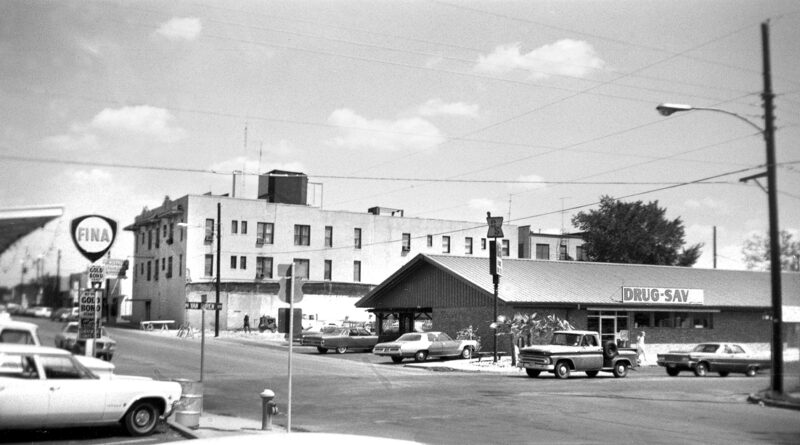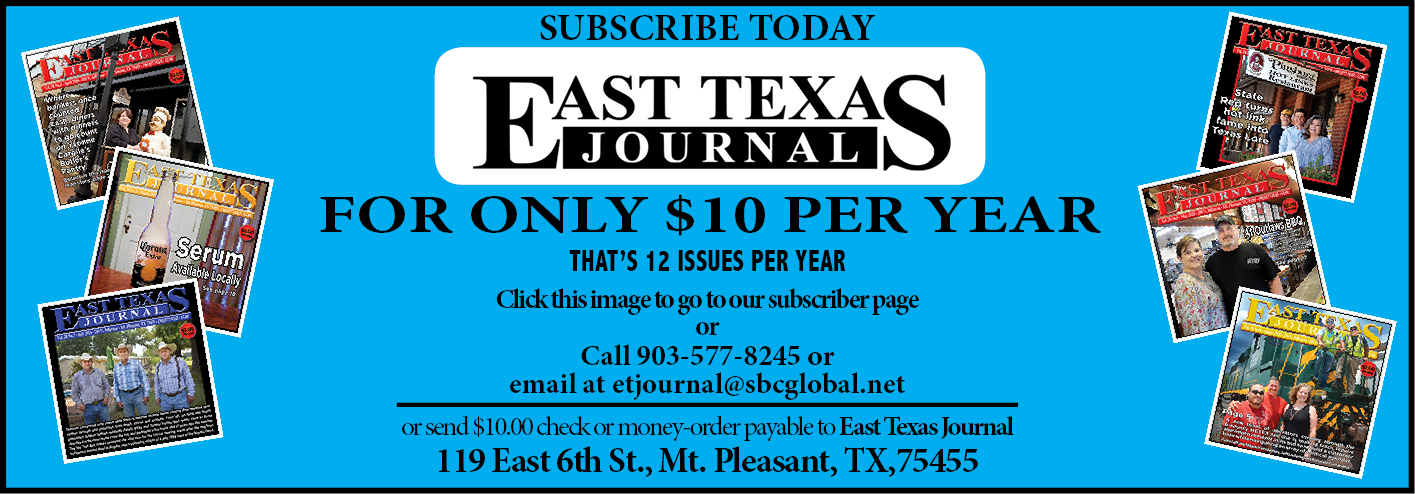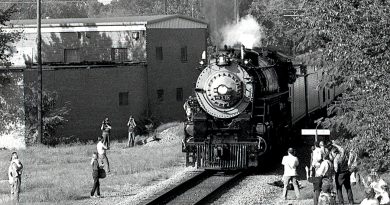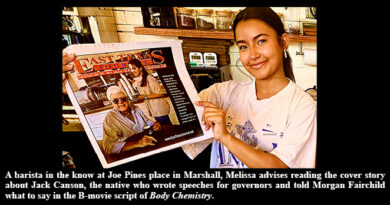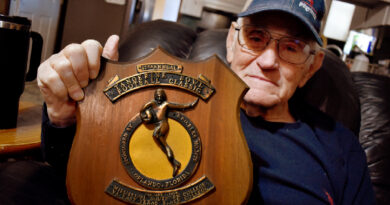Archives provide a history of hospitality, Hotel Stephens and fine dining at the corner of West 1st and Madison
Above picture, on August 28, 1982 when Lynch Harper shot this, Billy Craig sold Fina Gas refined at Mt. Pleasant’s American Petrofina Refinery fed by the pipeline from the Talco Oil Field discovered in 1936 because wildcatters Stephenson and Hinton gambled on the Carr No. 1 which hit. Mr. Harper shot this to document the day they knocked down the town’s first steam laundry to make room for a first sip of liquor by the drink. John B. built the Stephens Hotel’s Black Angus Club where the laundrymat was ,about center frame in the light spot. After John B took rich in oil, he bought and touched up the old Stephens hotel in the backdrop that day, where the bell tower is now.
The wine selection offered with any entre from Chef Brandon Rodriguez’s wood-fired oven at Nardello’s was pre-dated at the intersection of West 1st and Madison by the first whiskey and calf fries pushed across a bar in Mt. Pleasant since prohibition.
When Texas legalized liquor by the drink in the 70’s, the Black Angus Supper Club put drinking and dancing on the menu with the last big blast of the fabled Hotel Stephens when it stood on the corner across from Nardello’s.
Since opening in 2018, Nardello’s has made a destination of a restoration noted in the city building permits as a half million dollar improvement.
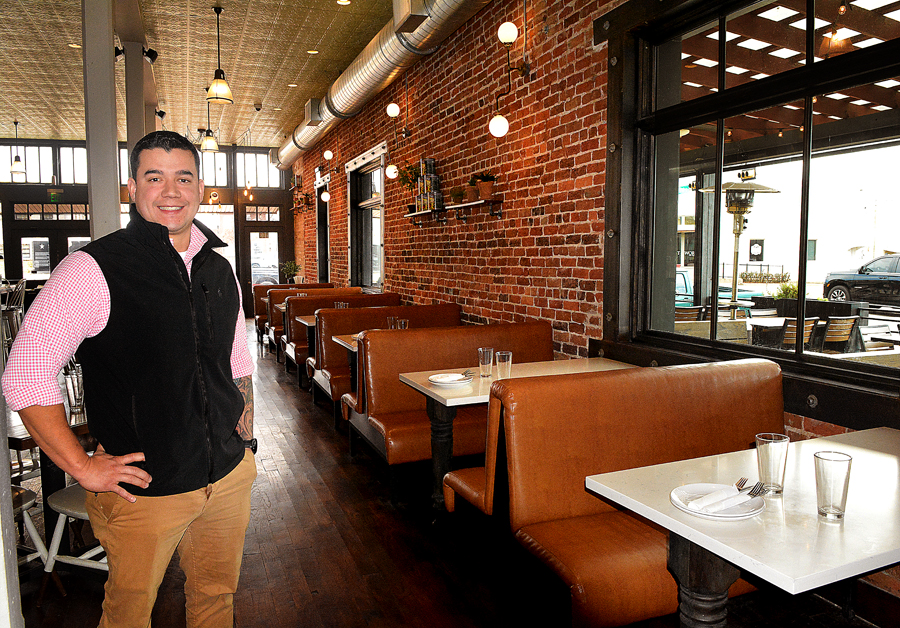
liquor by the drink, dancing and dining across the street at the Black Angus Supper Club.
The old hotel dates back to the days when the route of the transcontinental Broadway of America crossed the town square on West 1st.
Owned and managed by Texas oil and cattle baron John Stephens, the Hotel Stephens came out of the “Sanitarium” built on the southwest corner in 1902.
Dr. W.H. Blythe’s Electric Static Machine provided state of the medical art services until the hospital closed in 1916 and the electrostatic machine was moved across the street and stored on the second floor above Rogers Hardware where Chef Brandon today serves fire-roasted pizza with street legal wine.
See how neatly all the pieces fit together?
“Hotel Roots run deep,” said the 1987 story Society Editor Ida Burnett wrote for the Tribune.
Ida took the story back to 1875, when Daisy Buchanan’s grandfather, Blythe, purchased the southwest corner of West 1st and Madison from J. William Withee for $15.
Her account zeroed in on a Saturday, January 30 1909 issue of The Weekly Journal, where a glowing description of the building’s ventilation controls described the scientific monitoring of thermometers and barometers employed in managing the system.
Published only months after the January 5, 1987 death of Mr. Stephens and the closing of the hotel, Ida’s story included an interview and photo of Mrs. Buchanan with her grandfather’s static electricity medical machine.
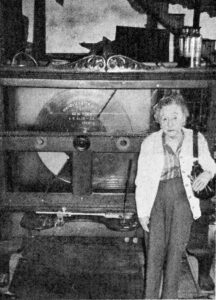
“Some of the experiences of patients who found healing at the sanitarium are about people still living here,” the story said, then moved into the anonymous account of a former patient who had suffered “Infantile paralysis from the waist down. Her parents took her to Dr. Blythe.
“She said she sat on a shelf-type area of the thing and that when the electricity was applied her hair stood straight up on her head and a tingling sensation passed over her body. The treatment worked and she received full use of her body and limbs again,” the story said.
Dr. Blythe retired and sold the property to A.P. Williams in 1916.
The story took a dark turn in 1918 when Ida’s father, a local contractor, was hired to construct the third story addition when the hospital was converted to a hotel.
“He and one of his carpenters were on a hanging scaffold high on the front of the hotel when acid ate through the scaffold rope,” she wrote. Her father survived the fall, but died within hours.
In the May 30, 1930 Mt. Pleasant Times she found first mention of the town’s first steam laundry being built on property adjacent to the hotel’s south side after being purchased by C.H. McDonald.
He built a 24-hour service station on the northwest corner of the building.
She found a letter from 1937 written on hotel stationery when it was the Jefferson Hotel, “completely air conditioned” and “the only 100 percent fire proof hotel in Texas.”
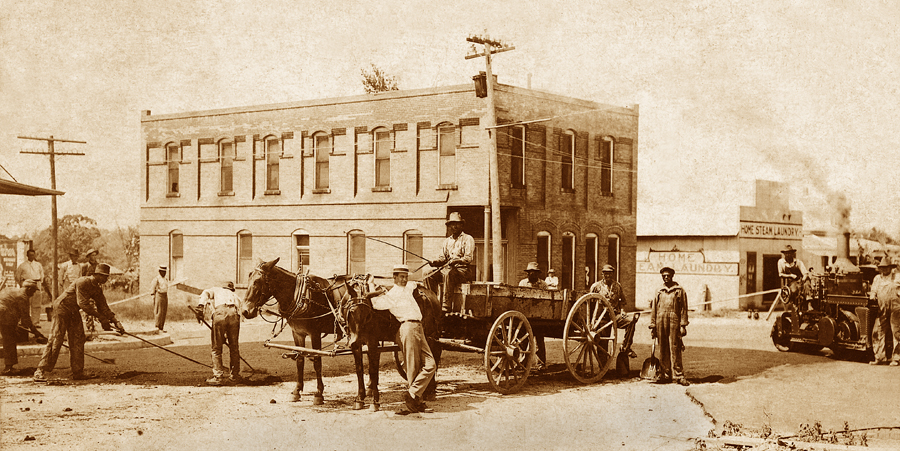
A wild-cat oilman descended of an old-line Titus County ranching family, in 1936 John B. Stephens was a partner in the Car Number 1 Discovery well in Talco. The hotel became headquarters for oilmen and speculators descending with the boom on Titus County.
In 1949, Mr. Stephens bought half interest in the hotel. There was a name change
“John B. Stephens, local oil man and industrialist, has purchased complete control of the Pleasant Hotel and plans to remodel within 60 to 90 days. The hotel has been owned jointly by Stephens and Frank C. Henderson, insurance and real estate dealer, for several years,” reported the March 11, 1954 afternoon edition of the Times.
“Stephens said the hotel, once the most modern in Northeast Texas, will be put back in top condition,” the report said. “The first work will be the modernizing of the lobby and coffee shop.”
In 1938, he built a dining area behind the coffee shop with a maple hardwood floor “especially to be available for dances.”
In August, 1972, the parking garage where the gas station had once been was torn down to make room for the Black Angus Supper Club.
Closed after Mr. Stephens died, the vacant hotel’s future was in doubt when Ida Burnett wrote her 1987 story. Sometime after that it was sold and converted to warehouse space. Access through broken windows made it a pigeon roost.
By daybreak of a crisp October 4 Sunday, 1998, the once “only 100 percent fireproof hotel in Texas” had burned, reduced overnight to ashes and rubble, brick wall skeletons of arched windows.
It had been a fantastic fire and the arson investigation made headlines with federal, state and local investigators cued by a dog trained to locate evidence of “accelerants” pointed to evidence sent to the state lab.
There’d been a number of suspicious fires that summer and fall. Ultimately, an investigator with the state fire Marshall’s office said “it could be nothing more than polycarbons in roofing material” that alerted the dog.
The investigation petered out.
The county bought the property, put in a parking lot.

